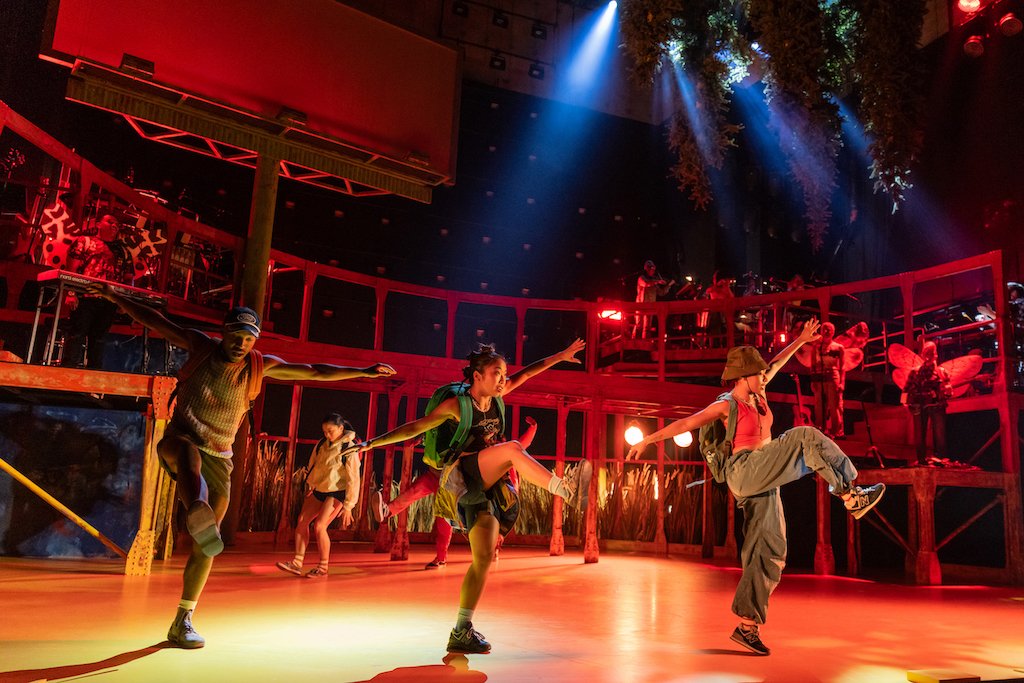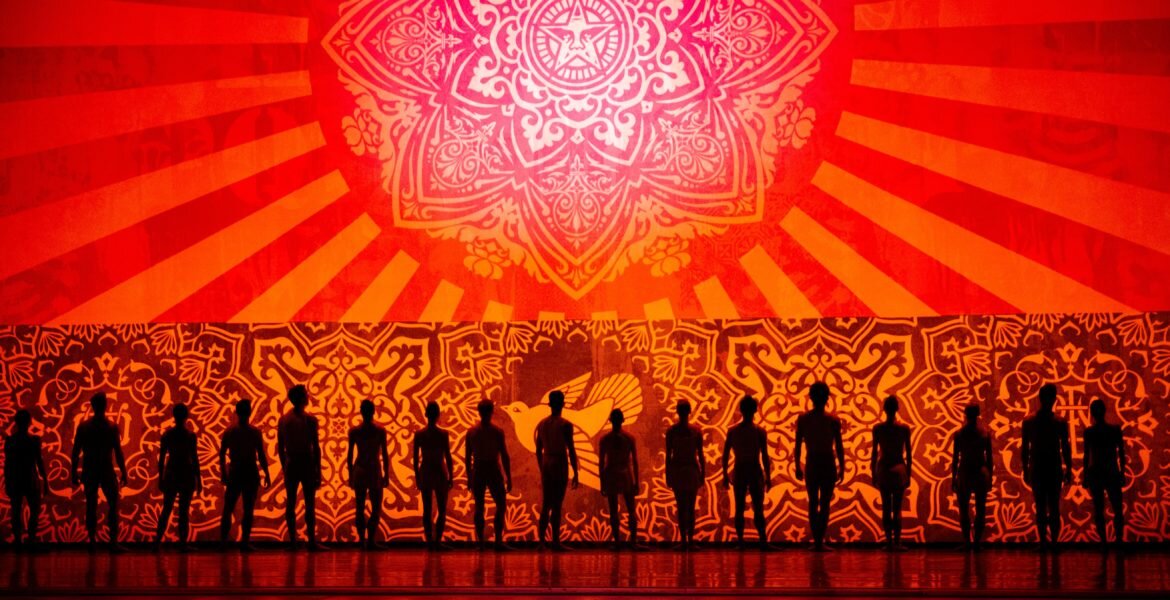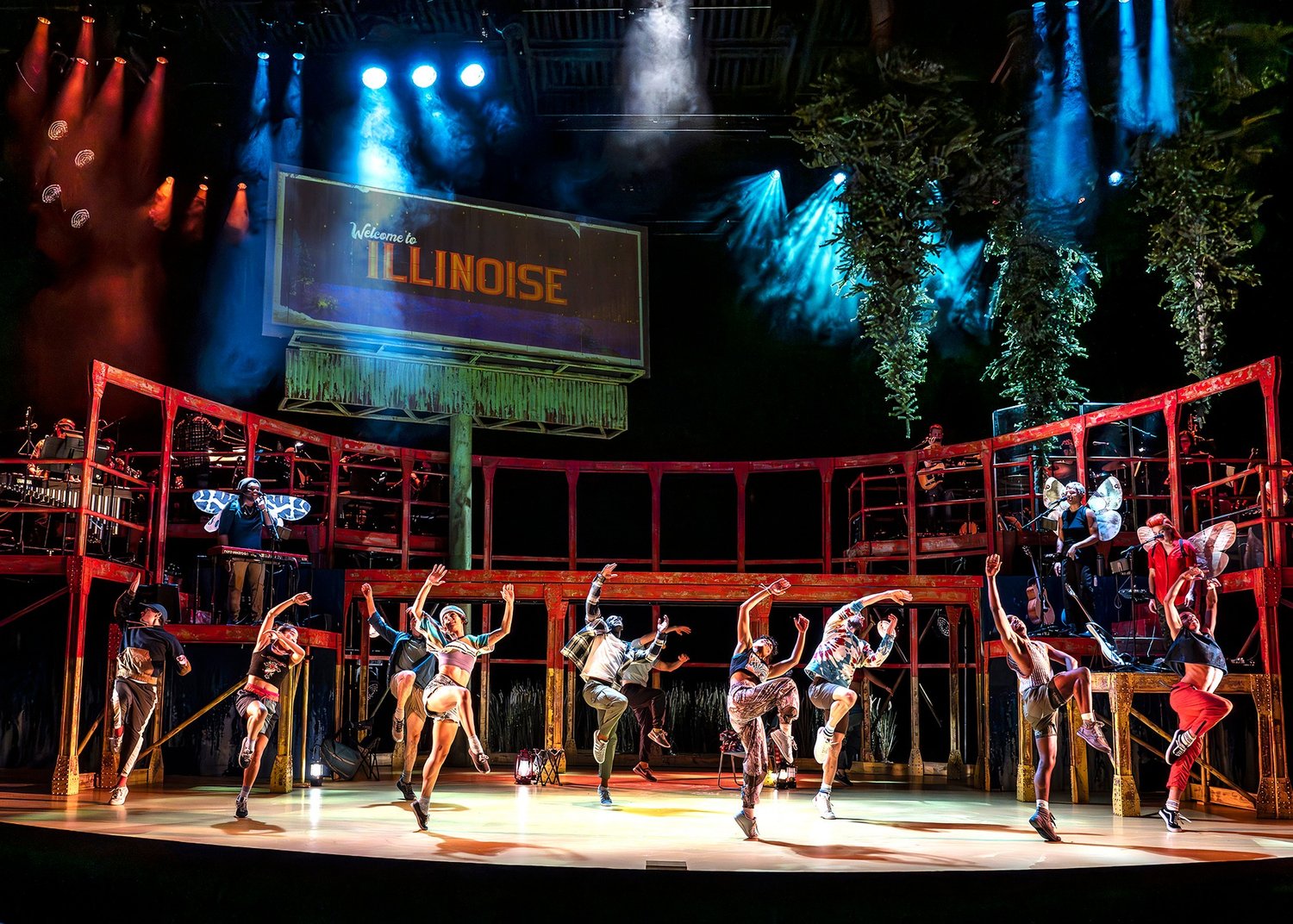Brandon Stirling Baker – Designing Beyond Light
Posted on March 11, 2025
Photo: Matthew Murphy
Officially, his brief bio sketch in theatre programs typically reads “lighting designer,” but Brandon Stirling Baker prefers to define his work in much broader terms. During the course of our interview, the New York based Tony Award nominee told us that he views himself as a visual artist, who happens to work in the medium of light.
For Baker, lighting is not a distinct entity onto itself, but part of a larger, richly textured creative fabric that weaves itself throughout the human experience, conveying hopes, fears, anger, doubt and all the other emotional states that define our lives. As a designer, he relies heavily on color to contribute to this narrative, seeing it not just as a reflection of light, but as a window into the heart of a story.
 Baker’s visionary design philosophy undoubtably guided him in his work on ILLINOISE, the 2024 Tony Award nominated dance-musical that conveyed myriad emotions and experiences without a single word of spoken dialogue. His design for that play earned him a Tony nomination of his own.
Baker’s visionary design philosophy undoubtably guided him in his work on ILLINOISE, the 2024 Tony Award nominated dance-musical that conveyed myriad emotions and experiences without a single word of spoken dialogue. His design for that play earned him a Tony nomination of his own.
Ironically, ILLINOISE was Baker’s first Broadway show. For more than a decade before that show’s opening, he was busy building a widely acclaimed career working in dance, serving as the lighting designer of The Boston Ballet, in addition to working with The New York City Ballet, American Ballet Theatre, and Joffrey Ballet, among others. In 2019, he won a Knights of Illumination Award for his work on the Houston Ballet’s production of Reflections, by his frequent collaborator, the multi-award winning choreographer and director, Justin Peck.
Taking time from his busy schedule, Baker spoke to us about the world of lighting design beyond light.
You’ve said you view yourself as an artist that works with color, just as much as light — and your work does indeed display an extraordinary vocabulary of color. Is there any one particular mood, emotional state, or human condition that you find most difficult to capture in color?
“I think a lot of people would agree that life is complicated, the world we live in is complicated, and our feelings about all of this can sometimes defy explanation, so for me as a lighting designer, I am very interested in providing a frame for the work onstage. I never assume that light alone can provide all of the answers. I believe that color and light can frame the story and provide a point of view, and perhaps that’s enough.”

Photo: Matthew Murphy
Among the most infinitely mysterious and powerful things about colors is the way they interact with one another. Looking at color combinations are there any that you feel are particularly good at allowing the two or three different colors to draw strength from one another? Conversely are there any color combinations that you try to avoid?
“Our interaction with color is essential to our understanding of life and the world we live in today. I never assume I have the answer for color, and I certainly never avoid color combinations due to a previous experience.”
“I do think there are many designers, myself included, who are drawn to a certain color language in our work, but for me I always keep my eye and my heart open to what feels right for this specific moment in the story being told. The color in my work is always specific to the project I am working on. I have often said that when I listen to music I listen for color, I say this because I believe naturally there is an emotional feeling of color in a music score or song. In many ways it tells you how to provide color in the light. For example, even in my most abstract work, there is always a story of color that runs parallel to the narrative happening onstage.”
Your beautifully textured and colorful lighting design for the Broadway hit ILLINOISE earned you a Tony nomination. Can you describe the challenges of lighting a dance musical that has no dialogue? Did this put a greater demand on lighting to advance the narrative, since there were no words? Without words to refer to, what cues did you rely on to set the emotional tone for your lighting?
“As a lighting designer who works often in music and dance, I am very comfortable with no dialogue. If you watch an old film by Buster Keaton or Charlie Chaplin, you don’t think ‘I wish I could hear their voice.’ The visual is enough. I feel it’s the same in dance. Working on ILLINOISE for me was an extremely creative process that in many ways had a lot of freedom, but also a great responsibility to tell the story with only music, choreography and light. There is a wonderful quote by choreographer George Balanchine that says; ‘If there is one man and one woman on stage, you already have a story, if there one man and two women onstage you already have a plot.’ think it’s important to always consider the big picture onstage and never forget that stories are always around us.”

You collaborated with choreographer and director Justin Peck on ILLINOISE. The two of you have been working closely together since 2010. Collaboration is so important in theatre and dance. Can you tell us a bit why your collaboration with Justin works so well?
“Justin and I recently collaborated on our 33rd premiere together, we have been through so much over the years. In many ways, you can say we have grown up together. I think what makes our collaboration so successful is that we have a lot of trust. Justin and I will spend many months discussing the music and staging without saying a single thing about light. I feel that’s an important part of our process. It tells me everything I need to know about light.”
ILLINOISE was your first Broadway project, but you’ve done an impressive body of work in ballet, including the Boston Ballet and the New York City Ballet. What are the big differences between lighting a ballet verses a Broadway show?
“For me the only real difference is the audience. The world of ballet has a very specific audience of dance lovers, music lovers, subscribers, and people who have great love for the history of this artform. It’s really a magical place where the only agenda is making art and creating new work. The Broadway community has allowed us to reach a much broader audience. Broadway is certainly a business, but it’s allowed us to bring in many people who have never seen a ballet or even any form of dance before. That exposure is really thrilling to me.”
“Creatively as a designer, I don’t feel that there is any difference to working on Broadway verses working on a ballet. I think there are many people who like to put artists into a specific genre or category based on the type of work they do. But I really find that to be old fashioned, and it does not speak to the actual work I do today. If you’re a designer, you’re a designer. The job doesn’t change if you work in different genres.”

Photo: Matthew Murphy
How do you get inspired at the start of a project? Long walks? Listening to music? What are the things that get your creative juices flowing?
“All of my work and inspiration begins with the music. As I mentioned earlier, the music tells me everything I need to know about the spirit of a project, it tells me about color, space, rhythm. Even if it’s a straight play, there is still a sense of rhythm present in the show. I am very self-motivated, so I often find that the music is my north star in many projects.”
There have been quite a few advances lately in lighting design technology. Are there any in terms of lighting fixtures or design software that have enhance your creative process as a designer?
“Well, it is no longer a new tool but LED fixtures have really expanded my color work in a very exciting way. The only challenge that I’ve come across has been finding fixtures that can render color in the same way as other manufacturers. Finding a common color language between fixture types is very time consuming. I feel that we are living in a world where many different fixtures and manufacturers are in one light plot, so we as designers and programmers need to always consider the color range of the many different fixture types. It requires all of us to be really specific with fixture types when doing a long term project such as a Broadway show or a ballet in repertory.”
You’ve lit dance at many of the most prestigious venues in the world. Do you have three or four venues that standout as your favorites?
“The Hollywood Bowl in Los Angeles, David H. Koch Theater at Lincoln Center in New York, Boston Opera House, and most recently the Paris Opera House. These are all venues that continue to inspire me every time I work in these spaces. When working at the Hollywood Bowl and Paris Opera House I am sincerely starstruck by the room I am in. It’s a hard feeling to describe in words, but something I will never forget.”

Photo: Matthew Murphy
Looking back at your career, how is your approach to lighting design different than it was earlier?
“My work continues to evolve over the years, I don’t repeat myself too often in my work, I try my best to always explore a new approach to color, equipment, types of projects, and new collaborations. Overall, I feel that my work has become more efficient now than ever before. I am using fewer lights for the sake of time, but also to streamline my ideas. Less is more in my work. I am very excited when I can design a show with maybe only five beautiful lights with a strong idea, that is way more exciting to me than having a large light plot with over 200 units and perhaps too many ideas.”
What is the one thing you want people to know about you as a lighting designer?
“I think above all, I feel that I am a visual artist who happens to work in the medium of light. I feel that this approach in my personal and professional life has really informed the way I create work now and always.”

Photo: Matthew Murphy